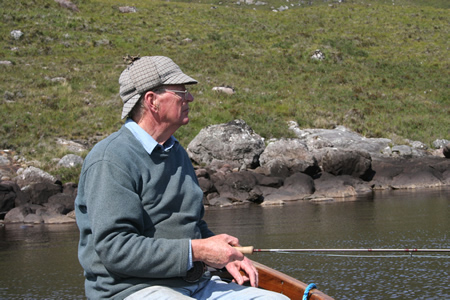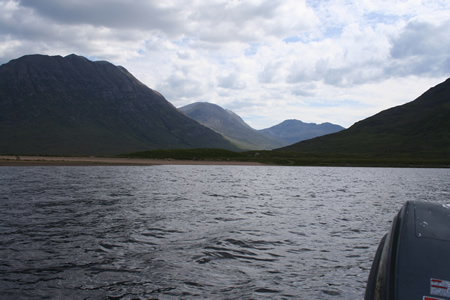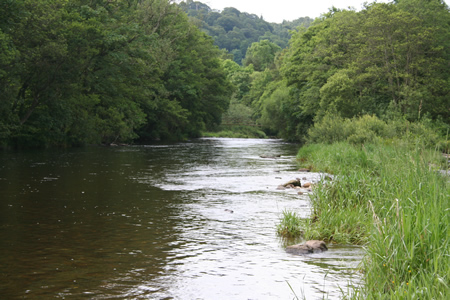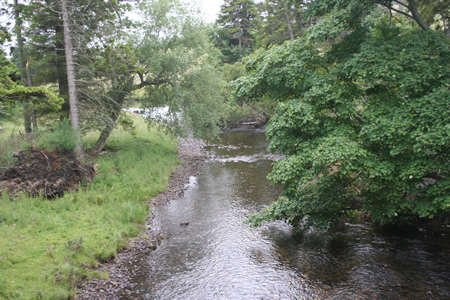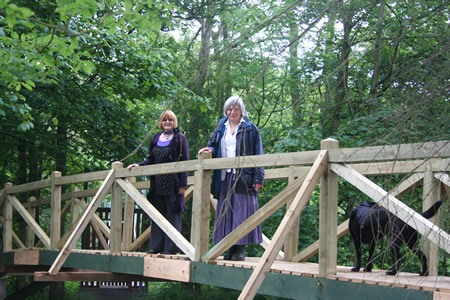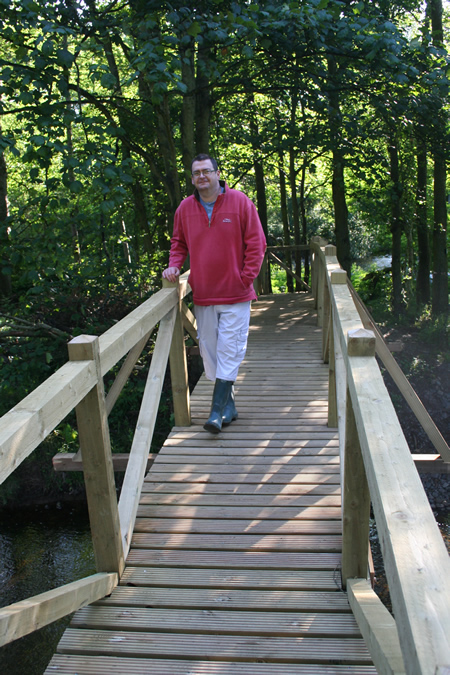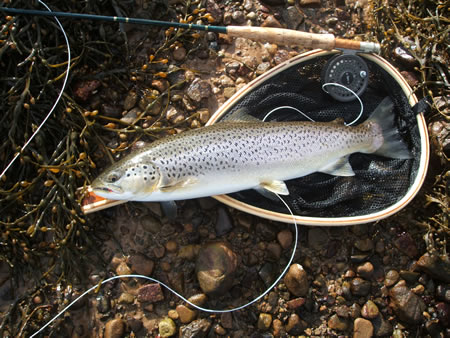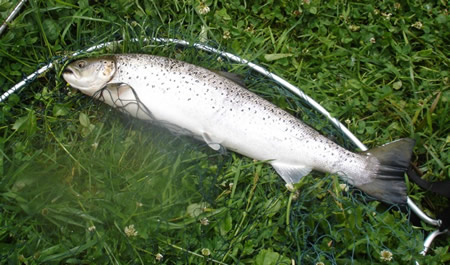These bulletin blogs represent news about Finavon and the South Esk, and my views as a riparian owner. They are not the views of any other organisation, nor are they designed to promote the interests of any individual or organisation other than Finavon Castle Water and factors affecting the fishery. Tony Andrews
I spent last week fishing the Gruinard River in Wester Ross. This was a rare moment of infidelity in my long relationship with Finavon. I am no philanderer when it comes to my love affair with the South Esk, but, if you are going to have a fling, there’s nowhere quite like the Gruinard and Strath na Shealagh. My upstream neighbour and riparian co-proprietor, Colin Gibb (see picture), has long held this view of East and West!
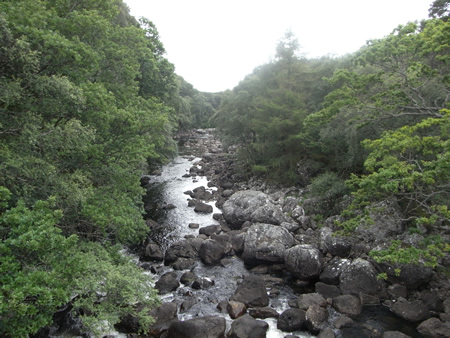 Low water on the River Gruinard below the road bridge
Low water on the River Gruinard below the road bridge
Colin Gibb, proprietor of Inshewan fishings on the South Esk, fishing on Loch Na Shealagh:
Loch Na Shealagh, head of the Gruinard River, Wester Ross.
While the South Esk had a week of heavy rain, high water and a tumultous flood on Thursday night, the Gruinard dropped away to a bare stickle by the end of the week. In fact it was only the East wind that kept water slopping out of Loch Na Shealagh, and when the wind died and then veered to the West the river level dropped by two inches. In such circumstances most fishers would have packed their bags, googled ‘golf courses Wester Ross’ or do what I did, which was to visit the incomparable Inverewe Gardens and some of my old haunts around the shores of Loch Ewe. Despite the low water in the Gruinard River we managed to catch 2 salmon, 19 sea trout and 34 brownies, all in the Loch, which in the circumstances wasn’t too bad.
The West in sharp contrast to the East….
The Flats (Milton Beat) and suspension bridge beyond
Back at home our tenants, Simon our web designer, and our mustard-keen syndicate members, all struggled to catch fish. When they did land one (many were lost) it was usually a cracker, exemplified by a beautiful 10lbs salmon caught by Ian Ingledew and a 4lbs 6oz sea trout caught by the Brattesani party. Then the floods came, the water coloured up and everything went quiet catchwise, although the river must have been sending a powerful chemical signal to its progeny of grilse, salmon and sea trout lying off the coast. I find the thought of these summer fish, a high proportion of which usually fall victim to the Usan nets, entering the river in response to the flood signal, most reassuring. It is inspiring to reflect on them forging their way upstream unobstructed, and more than likely being in a position to fulfil the object of their migration – spawning. We need a long term view of the River with the thought of another year when stocks will be naturally replenished without much in the way of impediments to that vital process. After all, it is that natural cycle that makes the world go round, a point repeatedly made by Ted Hughes in his salmon poems.
Upper South Esk Catchment: Glen Clova (once described to me by a well known fishery biologist as “perfect juvenile habitat for salmon and trout”)
The catch for the wet week at Finavon that ended on the 9th of July was 5 salmon (4 of which were grilse) and 4 sea trout. Not too bad in the circumstances. The grilse are now starting to appear, mostly under 4lbs, but over the next 6 weeks or so we should see the average weight rise, perhaps with the occasional fish into double figures by the time October comes. Prospects for the coming weeks look reasonable, provided the grilse keep coming in. My suspicion is that the sea trout run has peaked and that we will be lucky to maintain our average catch numbers of these fish. The River is in great condition, ready for the late summer and autumn runs of MSW fish. We have a few unlet days so please get in touch with Moray Macfarlane (07835 717 150) if you want to fish for autumn salmon.
TA
